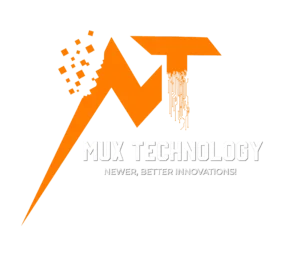Blockchain technology has revolutionized the way we view and take care of virtual transactions, imparting a secure and decentralized framework. However, ensuring the integrity and confidentiality of information within this dispensed ledger system calls for a robust protection infrastructure. Now, we’ll explore the concept of “What is Blockchain Security?” and how it emerges as a critical foundation, encompassing various measures and practices aimed at safeguarding the decentralized nature and privacy of cryptographic ledger transactions.
Key Components of Blockchain Security
The safety of a digital ledger community hinges on key components that ensure its integrity, confidentiality, and resistance to manipulation. Decentralization, crypto profit strategies, and the impact of clever contracts are foundational elements that collectively contribute to the robustness of cryptographic protection.
- Decentralization and its role:
Decentralization lies in the middle of blockchain safety, distributing control and lowering the hazard of an unmarried factor of failure. This ensures that no single entity can manage the gadget, imparting trustless surroundings.
- Cryptographic Techniques for Secure Transactions:
The digital ledger is predicated closely on cryptographic ideas. Public and personal keys, hash capabilities, and digital signatures play pivotal roles in ensuring the confidentiality and integrity of transactions.
- Smart Contracts and Their Impact on Security:
Smart contracts automate and enforce the terms of an agreement, improving efficiency. However, vulnerabilities in smart contracts can be exploited. Proper code auditing and trying out are important to mitigate these dangers.
Common Threats to Blockchain
Blockchain, while strong, isn’t immune to threats. Understanding commonplace challenges, including double-spending assaults, fifty assaults, Sybil assaults, and vulnerabilities in smart contracts, is pivotal. Vigilance and proactive measures are important to improve the decentralized nature of the digital ledger against malicious actors.
- Double-Spending Attacks:
One of the inherent challenges in virtual currencies, double-spending assaults, involves spending the same budget more than once. Cryptographic ledger consensus mechanisms, like Proof of Work (PoW) and Proof of Stake (PoS), aim to prevent such occurrences.
- 51% Attacks:
A fifty assault happens when an entity controls the majority of the network’s computing power, compromising its integrity. Consensus algorithms play a critical role in deterring such assaults.
- Sybil Attacks:
Sybil’s assaults involve creating a couple of fake identities to gain management over a community. Decentralization and cryptographic methods help reduce the susceptibility to Sybil assaults.
- Smart Contract Vulnerabilities:
Smart contracts, while efficient, are susceptible to insects and vulnerabilities. Regular audits and code critiques are essential to picking out and rectifying capacity troubles.
Security Measures in Public Blockchains
Public blockchains, characterized by their openness, require particular security features to maintain integrity and agree with the community. Implementing Proof of Work (PoW) and Proof of Stake (PoS), utilizing consensus algorithms, and recognizing the immutable nature of digital ledgers contribute to the public cryptographic ledger’s protection.
- Proof of Work (PoW) and Proof of Stake (PoS):
These consensus mechanisms steady public blockchains by requiring members to show their commitment to the community. PoW and PoS differ in their techniques, however, in proportion to the goal of stopping malicious sports.
- Consensus Algorithms for Security:
Consensus algorithms like Byzantine Fault Tolerance contribute to the safety of cryptographic ledger networks by ensuring settlement among nodes, even in the presence of malicious actors.
- Immutable Nature of Blockchain:
The immutability of a digital ledger guarantees that after a block is introduced to the chain, it can’t be altered. This feature provides a high degree of safety and transparency.
Private Blockchain
Private digital ledgers provide enhanced control and privacy capabilities, catering to precise commercial enterprise desires. Implementing permissions get-entry, specializing in greater privacy features, and selecting suitable consensus mechanisms contribute to the safety of private blockchain networks.
- Permissioned Access and Restricted Participation:
Private cryptographic ledgers restrict access, allowing only the handiest authorized members. This enhances security by minimizing the chance of unauthorized entries.
- Enhanced Privacy Features:
Privacy is paramount to the private digital ledger. Enhanced privacy functions, such as personal transactions and 0-information proofs, contribute to steady and confidential surroundings.
- Consensus Mechanisms in Private Blockchains:
Private cryptographic ledgers frequently rent consensus mechanisms tailored to their precise necessities, prioritizing performance and confidentiality.
Role of Cryptography in Blockchain Security
The cryptography bureaucracy is the backbone of blockchain protection, making sure of stable transactions and record protection. Understanding the function of public and private keys, hash capabilities, and encryption techniques is vital for maintaining the confidentiality and integrity of digital ledger systems.
- Public and private keys:
Public and personal keys facilitate stable transactions and make certain that only authorized events can get the right of entry to and alter data on the blockchain.
- Hash Functions and Digital Signatures:
Hash features and digital signatures provide facts with integrity and authentication, making sure that information stays unchanged and verifying the identity of contributors.
- Encryption Methods for Data Protection:
Encryption provides an additional layer of safety by changing records into unreadable formats, safeguarding them from unauthorized access.
What is Blockchain and Best Practices
Navigating criminal frameworks and making sure regulatory compliance is crucial for the sustained achievement of blockchain initiatives. Understanding worldwide perspectives, adhering to KYC and AML compliance, and recognizing the significance of legal frameworks contribute to steady and compliant surroundings.
- Navigating legal frameworks:
Adhering to felony frameworks is vital for blockchain projects. Understanding and complying with nearby and global rules is critical for long-term sustainability.
- KYC (Know Your Customer) and AML (Anti-Money Laundering) Compliance:
Incorporating KYC and AML methods enhances the accountability and legitimacy of digital ledger transactions, addressing worries related to illicit activities.
- Global Perspectives on Cryptographic Ledger Regulations:
Different countries have varied tactics for blockchain policies. Understanding global views is essential for groups operating in the global digital ledger panorama.
Challenges and Evolving Landscape of Blockchain
Addressing demanding situations and adapting to the evolving landscape of blockchain protection is an ongoing process. Whether it’s overcoming scalability issues, preserving tempo with technological improvements, or leveraging synthetic intelligence, the digital ledger network has to remain proactive.
- Addressing Scalability Issues:
As blockchain adoption grows, scalability turns into a task. Addressing this issue is crucial for maintaining the performance and safety of digital ledger networks.
- Adapting to Technological Advancements
Staying abreast of technological improvements is critical for blockchain protection. Integrating the brand-new gear and protocols guarantees the continued robustness of the machine.
- The Role of Artificial Intelligence in Enhancing Security:
Artificial intelligence can play a substantial role in identifying and mitigating protection threats. Incorporating AI-pushed security measures complements the overall resilience of digital ledger structures.
- Future Trends in Blockchain Security:
Anticipating destiny tendencies is important for staying ahead of emerging threats and technology. The integration of quantum-resistant cryptography, the effect of emerging technology, and predicted improvements in security protocols form the evolving panorama of digital ledger security.
Integration with Quantum-Resistant Cryptography
As quantum computing advances, integrating quantum-resistant cryptography is essential to protect against potential threats to cutting-edge cryptographic methods.
- Emerging Technologies and Their Impact:
Technological advancements, together with the combination of blockchain with the Internet of Things (IoT) and artificial intelligence, will reshape the security panorama.
- Anticipated Advancements in Security Protocols:
Continuous research and improvement will result in advancements in safety protocols, ensuring the adaptability of blockchain structures to evolving threats.
- Educational Initiatives in Blockchain Security:
Anticipating future tendencies is important for staying ahead of rising threats and technologies. The integration of quantum-resistant cryptography, the impact of emerging technology, and anticipated advancements in protection protocols form the evolving landscape of blockchain safety.
Importance of Awareness and Education
Raising awareness about blockchain protection is essential for fostering a stable virtual environment. Educational tasks assist people and businesses in understanding and enforcing satisfactory practices.
- Training Programs and Certifications:
Structured schooling packages and certifications make contributions to constructing a skilled group of workers talented in blockchain safety, ensuring the huge adoption of steady practices.
- Building a Skilled Workforce in Blockchain Security:
Investing in training and education creates a pool of specialists able to address the dynamic, demanding situations in the cryptographic ledger’s security, fostering innovation and resilience.
Blockchain Security for Businesses
As agencies increasingly adopt blockchain technology, understanding its safety implications is paramount. Incorporating digital ledgers for enhanced security, studying hit case studies, and spotting the cost-effectiveness of long-term advantages are essential concerns.
- Incorporating cryptographic ledger for enhanced security:
Businesses can leverage digital ledgers to protect numerous operations, from delivery chain control to economic transactions.
- Cost-Effectiveness and Long-Term Benefits:
While implementing blockchain solutions may also require preliminary investments, the long-term blessings, including more suitable protection and efficiency, make it a fee-effective desire.
Community Involvement in Blockchain Security
Active network participation is important for improving digital ledger protection. Through open-supply collaborations, bug bounty packages, and crowdsourced tasks, the collective intelligence of the network strengthens the general resilience of the cryptographic ledger’s ecosystems.
- Open-Source Collaborations:
Open-supply collaboration encourages network involvement in enhancing blockchain protection. Transparent improvement strategies contribute to robust and secure systems.
- Bug Bounty Programs:
Bug bounty packages incentivize moral hackers to discover and record vulnerabilities, growing a proactive method of protection.
- Crowdsourced Security Initiatives:
Engaging the community in safety tasks fosters a sense of collective responsibility, ensuring extra resilient and stable digital ledger surroundings.
Conclusion
In conclusion, blockchain security is a multifaceted domain that requires non-stop innovation and collaboration. By knowing the key components, addressing commonplace threats, implementing safety features, and staying abreast of evolving developments, the blockchain community can create a stable and decentralized destiny. Through academic initiatives, companies adopting digital ledgers, and energetic community involvement, we will together shape a digital landscape that prioritizes security and agrees with.








